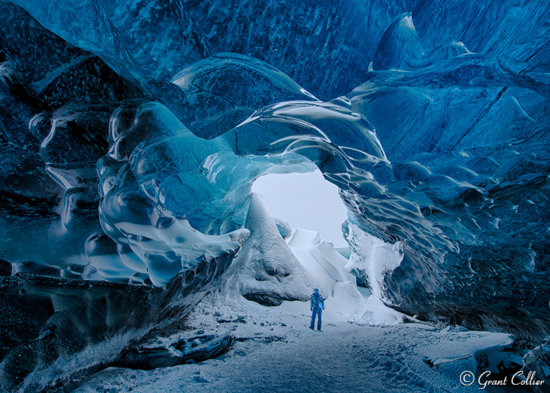Clothing for Photographing in Frigid Temperatures
Alfred Wainwright once said, “There is no such as bad weather, only unsuitable clothing.” As a nature photographer who has suffered through many bitterly cold nights and a few frenetic windstorms, I can tell you that this quote is pure rubbish. However, I can also tell you that suitable clothing can make bad weather far, far more tolerable. If you’re able to tolerate bad weather and stay out for many hours, you can often come away with some truly stunning images.
If it is going to be cold out, you should dress in layers, so that you can remove some clothing if you’re hiking and start to get hot. You don’t want to start sweating, as the sweat can later freeze, making you much colder. If it is going to be below 45° F, I recommend having at least two layers of clothing over most of your body. If it is going to be below 10° F, I recommend having at least three layers of clothing covering most of your body.
You should avoid using cotton as a base layer, as this fabric retains moisture and dries slowly, which can make you very cold. The fabric I prefer for the base layer is merino wool. Not only is it very warm and comfortable, but it also remains remarkably stink-proof, even if you wear it for many days in a row. This may not be too important to you if you are out photographing in frigid temperatures alone, but if you have any friends along, I guarantee you they will be very grateful!
One of the most difficult areas for photographers to keep warm is their hands, since it is impossible to operate a camera with big, bulky gloves or mittens. A solution I’ve found is to use Heat Factory Pop-Top Mittens with Glove Liner. The top of these mittens can be folded back, so that you just have a glove over the fingers. The glove is thin enough to allow you to operate your camera. When you’re not shooting, you can put the mitten top on to keep your fingers warm. You can also insert a hand warmer into the mitten top. If it’s really cold, you can wear a glove liner under this and/or a large mitten over it.
Verseo makes battery-heated ThermoGloves that are thin enough to operate a camera with. One drawback is that the charge only lasts a couple of hours on full power. I’ve also found that the wires inside the fingers can easily become misaligned with the glove and pinch your fingers. However, these gloves can be an option if you are shooting in bitterly cold temperatures where other gloves may not provide adequate warmth. Even with these gloves, I do still recommend hand warmers if it is very cold.
Some boots I recommend are the NEOS overshoes. They can be worn over your normal shoes, which allows you to add an extra layer of warmth. I own the STABILicers, which give great traction when walking on icy surfaces. This has come in very handy for me when I’ve photographed ice caves and frozen waterfalls.
It can be a little cumbersome hiking long distances in overshoes. So if you’re adventurous (or a little crazy) and enjoy long hikes in frigid cold weather, you can look into more traditional winter boots. Regardless of the shoe you use, always bring plenty of foot warmers if it will be very cold.
Once you have the right clothing, you’ll no longer have a good excuse to stay inside during the worst of the winter weather. Get out and discover the remarkable scenes that lie within the frozen landscapes of our planet.







